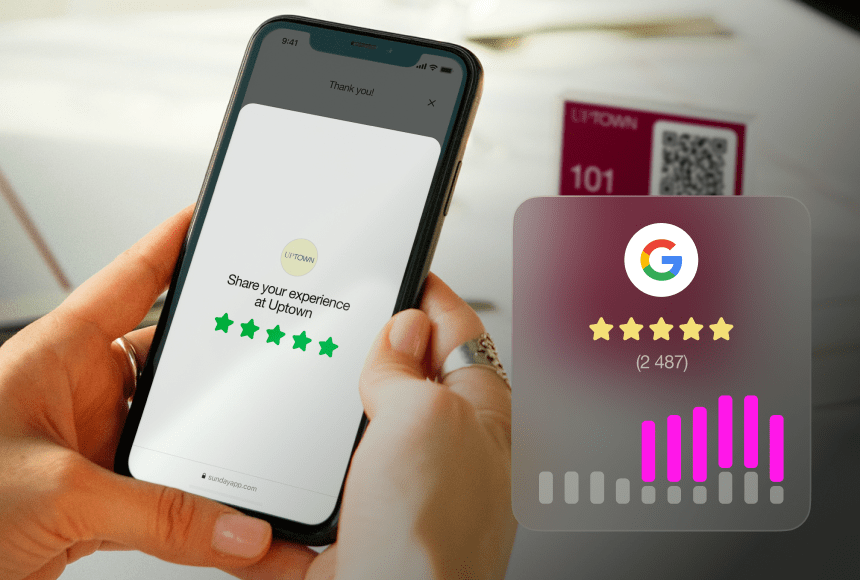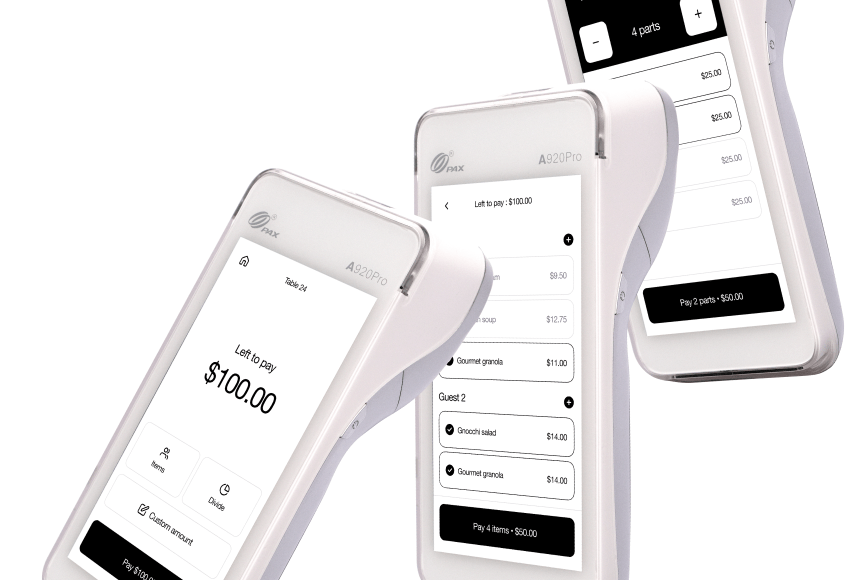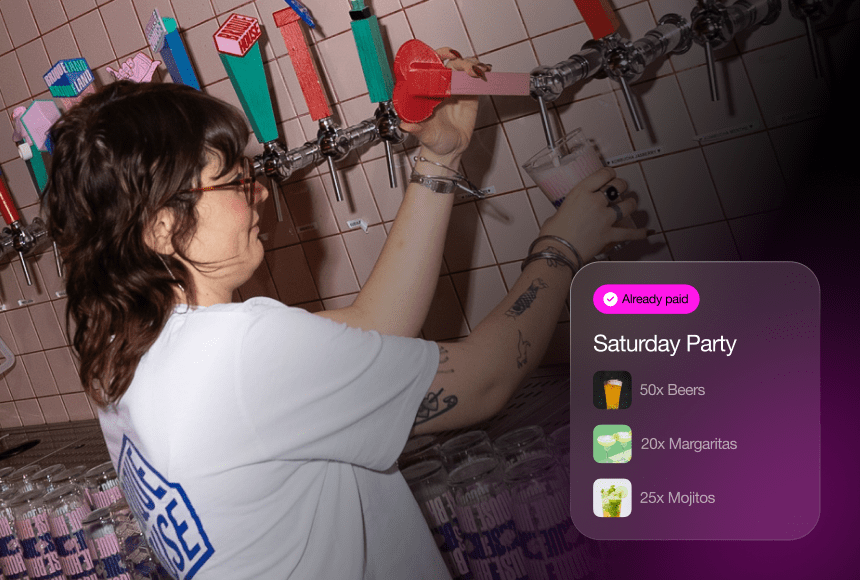
Fresh Strategies for Doubling Your Restaurant’s Positive Google Reviews
Why Google Reviews Matter More Than Ever
In the restaurant industry, your online reputation can make or break your business. Potential diners often head straight to Google Reviews to decide if they should visit your establishment or not. According to a BrightLocal survey, around 98% of consumers read online reviews for local businesses. That’s almost everyone who’s looking for a restaurant in your area. When hungry customers see a high star rating and authentic, positive feedback, it immediately boosts their confidence in trying your place.
Yet many restaurants still miss out on the potential of Google Reviews. Some owners believe it’s all about luck, or they assume that only the big players with massive budgets reap the benefits. But here’s the reality: smaller local spots can truly excel in Google Reviews by offering memorable service, quick payment experiences, friendly staff interactions, and strategic follow-ups that encourage guests to share their thoughts online. This strategy allows you to meet diners where they already are—on their smartphones—and transform a casual meal into a positive story about your brand.
Anatomy of a Positive Review: What Really Drives Stars?
To master the art of doubling your positive ratings, it helps to understand which factors convince people to leave a glowing review in the first place. Below are the core elements that diners usually evaluate before clicking “Post” on Google:
- Quality of food: Freshness, taste, consistency, and presentation all matter.
- Service experience: Attentive staff, friendly smiles, and smooth interactions with servers can make diners feel special.
- Ambiance and cleanliness: People want to see a space that’s welcoming and spotless.
- Ease of payment: A fast and convenient checkout process sets the tone for a hassle-free dining experience.
- Overall value: Do the menu prices match the quality, portion sizes, and experience?
The second any of these reflect a standout experience (or a glaring failure), customers often head to Google to document their feedback. By improving key elements of their visits, you give customers a solid reason to leave a favorable review.
The Customer Journey: Turning Dinners Into Digital Advocates
Think of your average customer’s journey. They discover your restaurant via word of mouth or an online ad. They decide to give it a try. They enjoy a meal, receive the check, and prepare to pay. In this short window of time, you have a unique opportunity to invite them to share their feedback—especially if you’re providing a delightfully unique experience.
Technology can help. For example, solutions such as sunday allow patrons to pay quickly via QR code at their table, tip with a tap, and even write a Google review before they walk out the door. This frictionless approach means your guests can capture their fresh impressions in real time. You effectively transform your diners into brand ambassadors.
The bottom line? The simpler and more memorable the experience, the more inclined they’ll be to leave positive reviews.
Best Practices to Double Those Positive Ratings
Let’s look at targeted strategies to encourage more glowing feedback. These methods come from real-world examples, as well as expert insights into how customers decide which businesses deserve their stars.
1. Provide a Memorable Experience from Start to Finish
Remember that reviews are snapshots of a total dining journey, from the initial greeting to the final goodbye. Even a small hiccup (long wait times, a rude staff member) can overshadow an otherwise stellar meal. So consider your diner’s full experience:
- Greet them warmly the moment they step in.
- Ensure the dining area is inviting and clean.
- Keep the ambiance consistent with your restaurant’s theme.
- Make checkouts quick—especially helpful if you offer a QR code payment solution.
- Thank them and extend a personal invitation to come back.
When each step is carefully thought out, you give diners multiple reasons to boast about you online.
2. Train a Service-Minded Team
Nothing wins a customer over faster than a friendly, confident, and knowledgeable team. Simple gestures such as eye contact, addressing the guest by name (if known), or even recommending a favorite dessert can go a long way in earning those extra five-star reviews. A few staff training tips:
- Host regular workshops or training sessions on customer service fundamentals.
- Empower servers to quickly fix minor issues without manager approval (for instance, replacing a beverage that’s not up to standard).
- Use role-play scenarios to practice how to handle peak rush hours, dietary restrictions, or special requests.
A well-trained team exudes a level of care that makes guests want to spread the word.
3. Ask for Reviews at the Right Time
Getting the right timing is crucial for reviews. If you ask too aggressively, you risk coming across as pushy. If you wait too long, the guest may have already moved on—and forgotten the details of their experience. Instead, aim for these perfect windows:
- Right after payment: When customers are usually checking their phones and are still on your premises.
- During the feedback conversation: If staff members sense a guest is exceptionally pleased with their meal or service.
- Via follow-up email or text: If you have a loyalty program or reservation system that collects contact details, send a polite (and brief) request for a review within 24 hours of their visit.
By targeting these moments, you increase the odds that a delighted guest will take the time to chime in on Google Reviews.
4. Provide Simple Access—QR Codes and Direct Links
Most people don’t want to navigate a complex process just to leave feedback. If you make it easy, they’re far more likely to share a positive review. Here are a few ways to remove common barriers:
- Print a direct link or QR code on every receipt directing customers to your Google Business Profile page.
- Use table signage with a short message like “Loved your meal? Scan here to leave us a review!”
- Offer payment solutions, such as sunday, that automatically prompt users to leave a review after paying with a QR code.
A frictionless review invitation meets the customer exactly where they are rather than asking them to jump through multiple hoops.
Dealing with Negativity and Turning It Around
Doubling your positive ratings doesn’t only mean generating new five-star reviews. It also means mitigating negative ones. Poor reviews can sink your overall score if they pile up. Yet, there’s a silver lining: a thoughtful and prompt response can sometimes change the reviewer’s mind, prompting them to update their rating. In some cases, it can even demonstrate your willingness to learn and improve, which resonates with potential customers reading the reviews.
Here’s a quick table summarizing best approaches for handling different types of negative feedback:
| Type of Negative Review | Typical Diner Complaint | Suggested Response Method |
|---|---|---|
| Service-Related | Slow service, rude staff, mistakes in orders | Acknowledge the concern, apologize sincerely, provide a plan to fix the issue, offer a small concession if necessary |
| Quality-Related | Food was cold, unappealing taste, or not as described | Apologize, highlight any recipe changes or steps you’ll take to ensure better quality, invite them to return |
| Price-Related | Expensive menu, lack of value for money | Thank them for the feedback, clarify what goes into the cost (locally sourced ingredients, chef expertise), and invite them back to try a dish that’s typically well-received |
An impactful approach involves addressing the complaint head-on while also showcasing your restaurant’s personality. In many cases, responding gracefully can convert a harsh critique into a future loyal patron.
The Role of Reputation Management
If your restaurant is buzzing with activity, you might be juggling so many tasks—inventory, staff scheduling, event planning—that monitoring and managing Google Reviews can feel overwhelming. That’s where reputation management steps in. By dedicating a team member or using specialized tools to track incoming reviews, you can:
- Identify patterns in feedback (e.g., consistent praises for the fish tacos or frequent complaints about slow lunch service).
- Spot negative comments early, which helps you respond tactfully before issues escalate.
- Track progress over time to see which changes in your operations are affecting customer satisfaction.
Regular monitoring ensures that you maintain a bird’s-eye view of your online reputation. And with quick response times, you’ll show current and potential customers you genuinely care about their experiences.
Measure Success: Tracking Your Google Reviews’ Growth
To confirm you’re on track to doubling your positive Google Reviews, you’ll need to measure key metrics. A few helpful indicators:
- Star rating average: If you started at 4.0, aim for 4.5 and higher. Incremental gains here increase your credibility.
- Review count growth: Keep tabs on the volume of new reviews. Are you consistently adding more each month?
- Positive vs. negative ratio: If you’re seeing two or three new positive reviews for each negative one, you’re making progress.
- Search engine ranking improvements: More positive reviews can boost your visibility in local search results, driving additional traffic and potential customers.
Some restaurants even celebrate small victories, such as gaining 20 five-star reviews in one month. These micro-goals help keep your team motivated and focused on consistent guest satisfaction.
Case Study: From Lukewarm to Rave-Worthy
Consider the story of “Della’s Diner,” a small family operation in a bustling neighborhood. They had excellent food, but an outdated payment system left guests waiting for checks, and staff occasionally forgot to invite happy customers to leave a review. At some point, negative reviews about wait times outnumbered the handful of positive ones. Their average rating was 3.7—decent, but not great.
Here’s how Della’s Diner turned it around:
- Streamlined payments: By integrating a QR code payment solution, such as sunday, they cut down on checkout time by 50%. Staff were more relaxed and could focus on customer engagement.
- A quick “thank you” strategy: After every meal, servers gently asked diners to share their experience on Google if they enjoyed their visit. They pinned signage with a QR code by the exit as a subtle reminder.
- Proactive staff training: The manager introduced short daily huddles to discuss service experiences and to remind the team about prompting satisfied customers for reviews.
- Responded to all feedback: They apologized for past wait-time complaints, offered free dessert vouchers, and invited upset diners to revisit. This open communication helped repair relationships and reduce the negative “echo” effect.
Within four months, Della’s Diner soared to a 4.4 rating, nearly doubling their positive reviews from several dozen to over a hundred. The manager credits the changes in staff mindset, the streamlined payment system, and keeping a pulse on how customers were feeling in real time.
Overcoming Common Hurdles
Even with a perfect plan, obstacles can pop up. Here are a few common ones and how to handle them:
- Fear of pushiness: Staff might worry about coming off as over-eager. Encourage them to see the review request as an invitation rather than a demand. A friendly, confident approach usually yields more engagement.
- Lack of internal coordination: Managers and servers need to be on the same page about how and when to request reviews. Regular check-ins to review (no pun intended) the process can keep everyone aligned.
- Tech resistance from staff or customers: If a team member or certain customers are uncomfortable with QR codes or digital payments, provide a quick tutorial with signage or a gentle walk-through. Make sure there’s a smooth plan B if someone insists on paying traditionally.
- Time constraints: In a fast-paced restaurant, managing reviews may feel like one extra thing on a long to-do list. Assign a single staff member or manager for daily or weekly check-ins. Consistency here is key.
Once you overcome these hurdles, you’ll notice how smoothly the process flows—leading to more positive feedback and happier guests.
Fine-Tune with Google My Business Tools
If you haven’t yet claimed and optimized your Google Business Profile, that’s a vital step. By logging in, you can update details such as your menu, business hours, photos, and more. Potential diners rely on accurate information when deciding where to go. Plus, Google offers insights into how customers find you, which reviews they’re reading, and more.
For best results:
- Log in regularly to ensure your hours and menu details are accurate.
- Encourage customers to add photos of their meals in addition to leaving a star rating.
- Use “Questions & Answers” on Google for frequently asked queries—like dietary options or group reservations.
- Stay informed by visiting Google’s Small Business Support for updates.
All these details help you stand out and pull in potential diners searching “best tacos,” “tasty brunch near me,” or “romantic dinner spots” in your neighborhood.
Encouraging Staff Buy-In
Your staff members are the first point of contact for guests. If they don’t believe in the importance of good reviews, they’ll never ask for them naturally. Get your team enthusiastic by:
- Sharing the positive impact of reviews on revenue and tip potential.
- Offering small incentives for staff whose sections gain the most positive feedback.
- Reading a weekly highlight of a glowing customer review at staff meetings. It’s free gratitude and motivation.
When your team feels invested in improving online ratings, the result is a united front that guests appreciate and want to rave about.
Ready to Reinvent Your Reputation?
Restaurants thrive when they make a lasting impression on guests. That’s the heart of your mission: brightening people’s mealtime experiences so much that they can’t wait to share it with the world. With an organized strategy—focusing on streamlined payment, heartfelt service, and timely invitations—you can double your positive Google Reviews.
And the best part? These aren’t complicated steps. It’s more about weaving a review-friendly attitude into the fabric of your day-to-day operations. From training and tech solutions, to professional yet personal responses for negative comments, you’ll evolve into a well-equipped restaurant that stands out in a crowded marketplace.
Frequently Asked Questions (FAQ)
Do I need special software to get more Google Reviews?
Not necessarily. Free tactics like adding a QR code on receipts or table signage can do wonders. However, specialized payment solutions such as sunday help seamlessly integrate a review request into the checkout process, streamlining everything from payment to feedback collection.
What if I receive a completely false negative review?
If a review is blatantly malicious or spam, you can report it on Google for possible removal. But always answer politely first. Provide your perspective and invite the person to contact you directly. This approach shows future readers you take feedback seriously.
How often should I check my Google Reviews?
Ideally, you should review new comments daily or at least a few times per week. Quick responses to both positive and negative feedback signal that you’re an engaged, caring business. It also gives you the chance to address issues before they spiral.
Is it okay to offer incentives for customers who leave reviews?
Be mindful that offering explicit incentives in exchange for reviews can violate Google’s policy. Instead, focus on encouraging honest, unbiased feedback. Invite customers to share their experiences, and if they genuinely enjoyed their time, they’ll likely leave a shining review.
Find out more today
Drop us your details below and we’ll reach out within the next 24h
Stay on top of your online reputation.
Say goodbye to bad ratings and hello to 5*s. Get to know your customers with our integrated rating & review feature, which allows you to get more reviews, better ratings and more visibility online.



